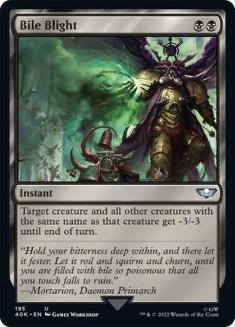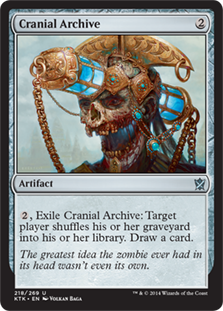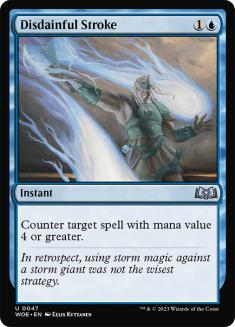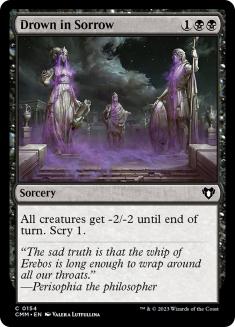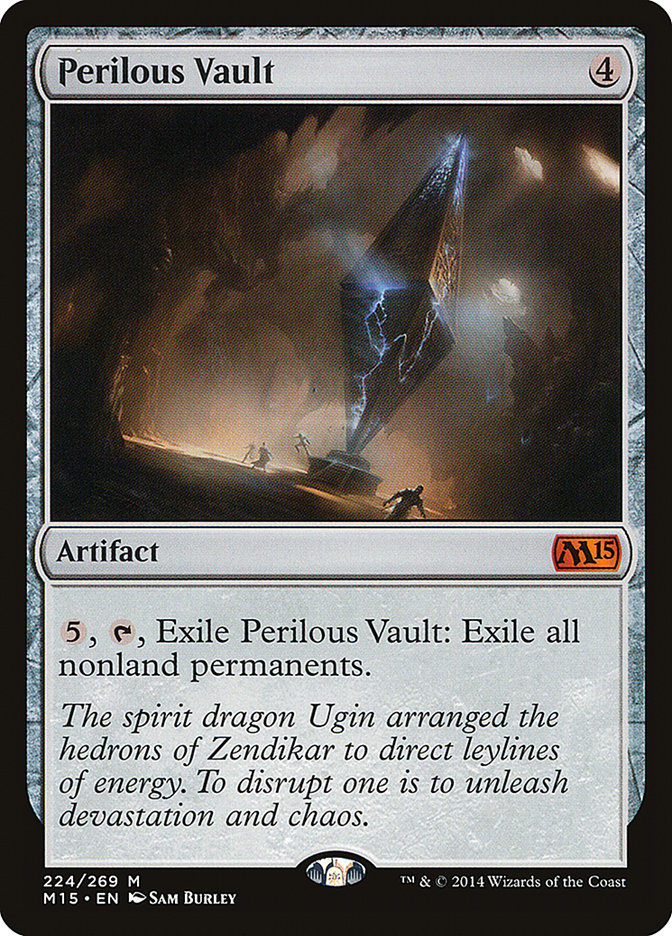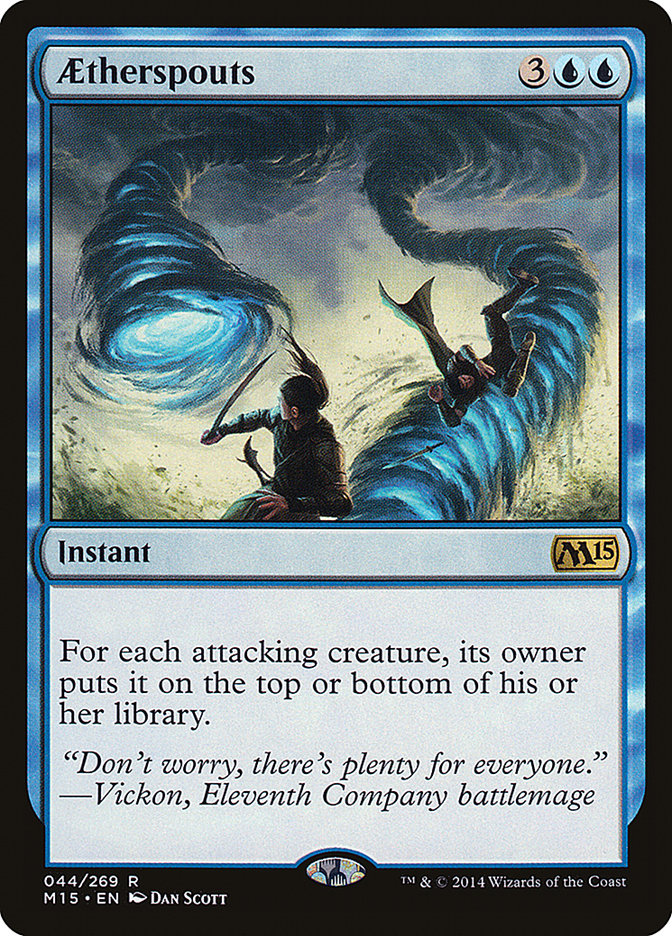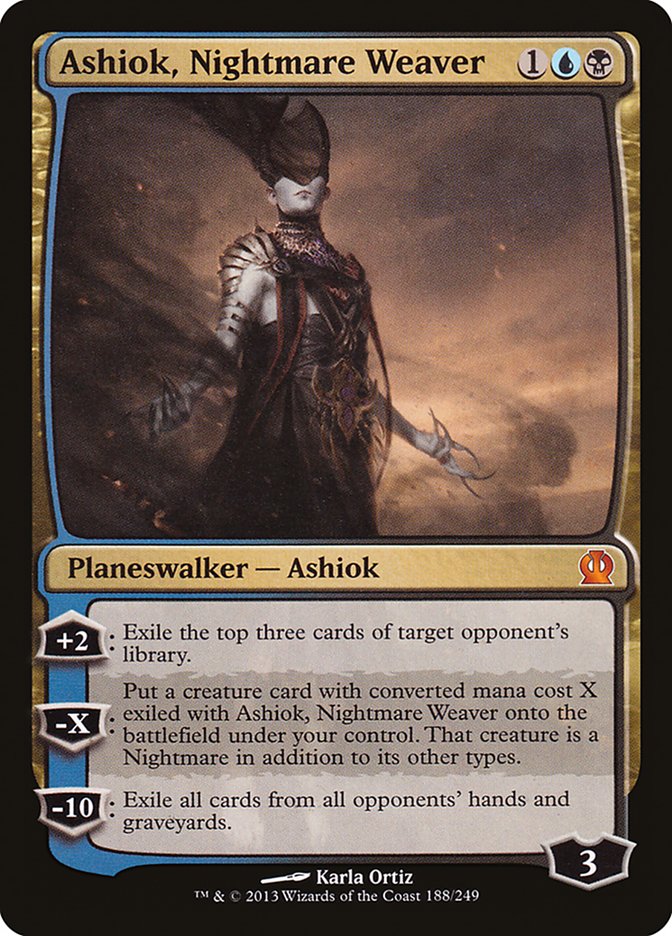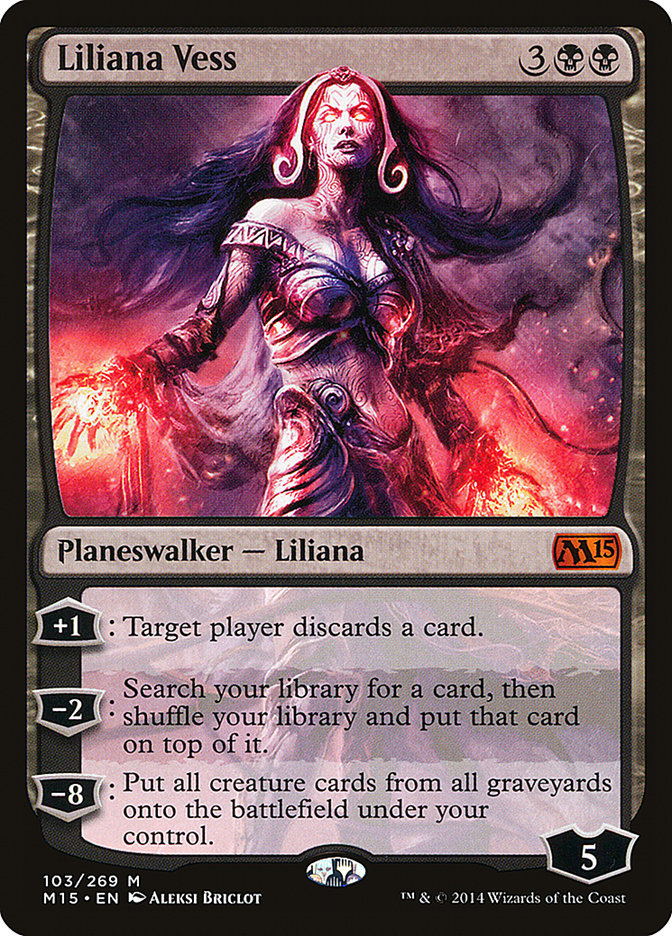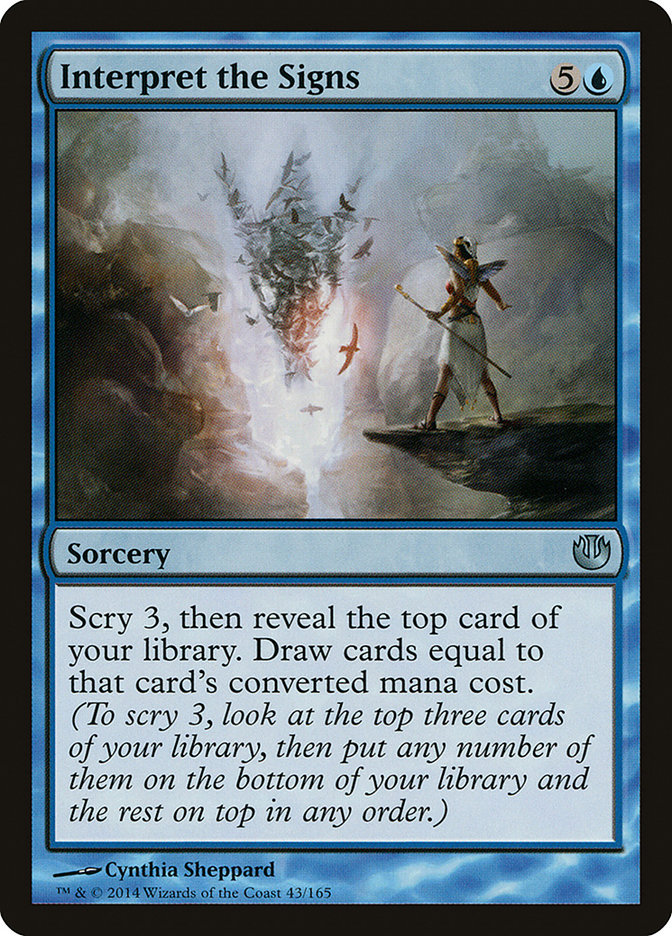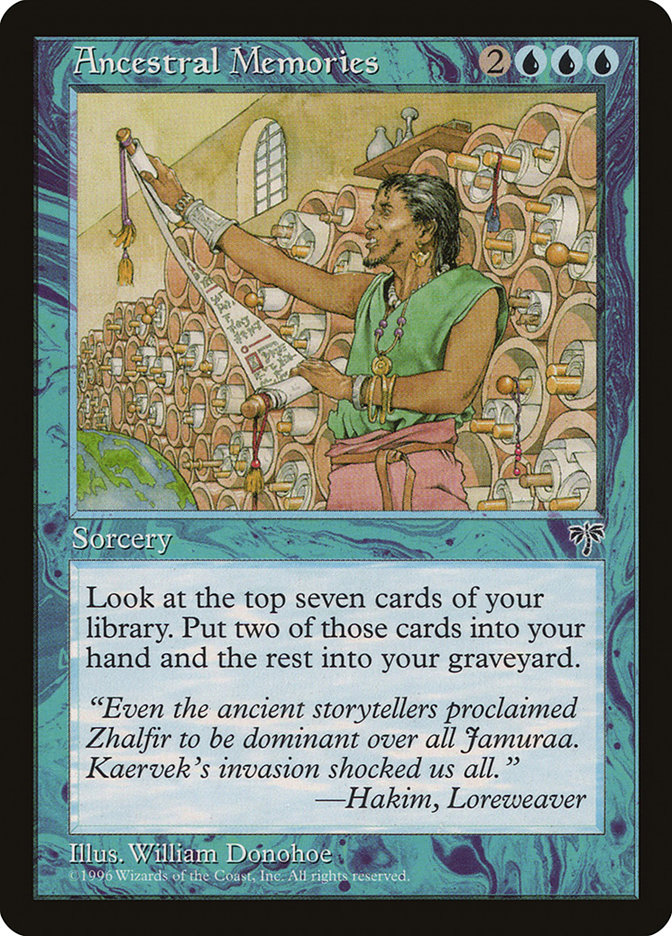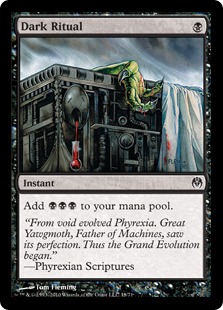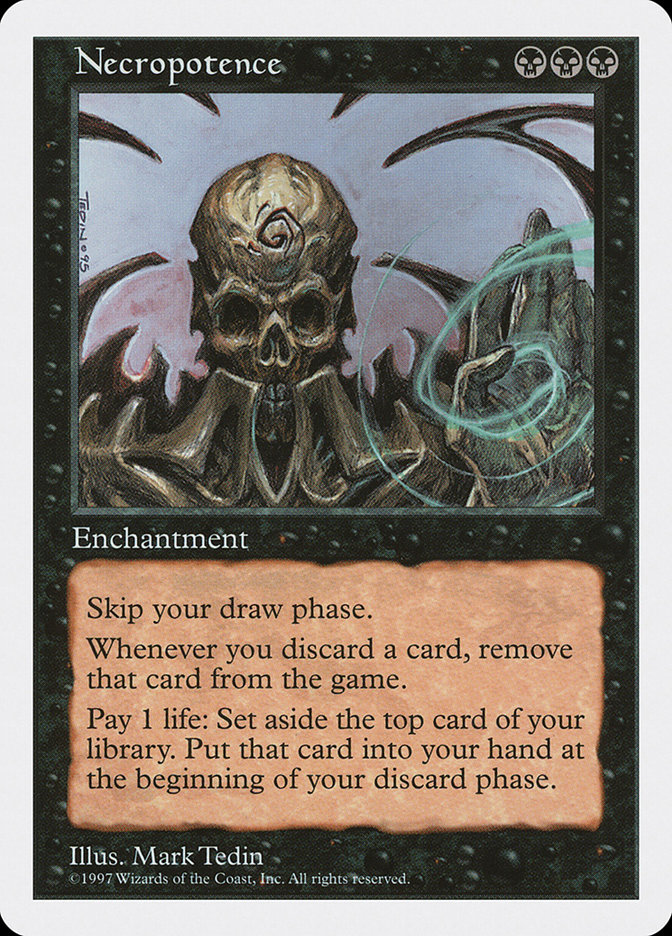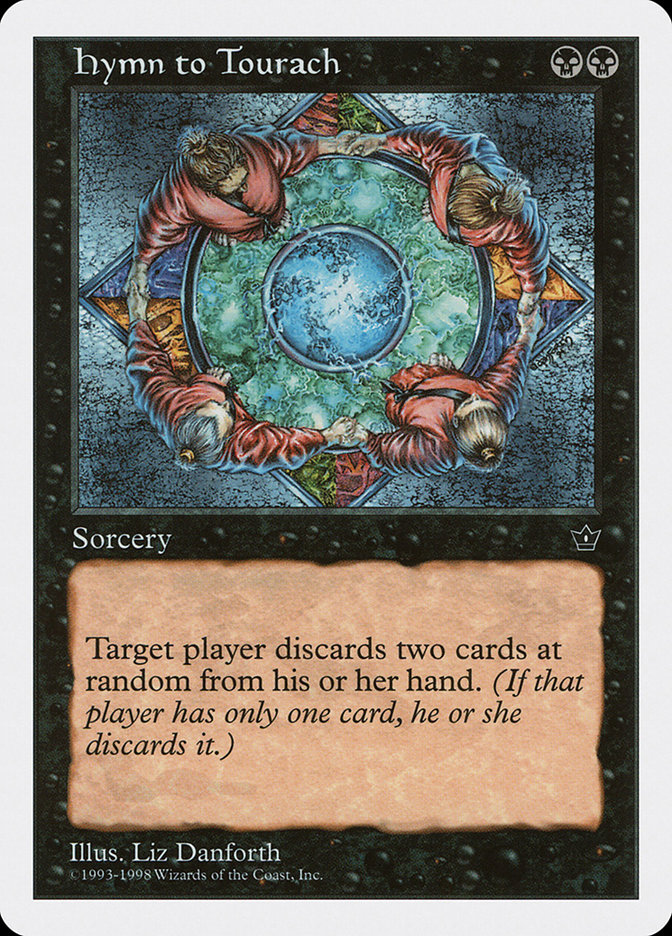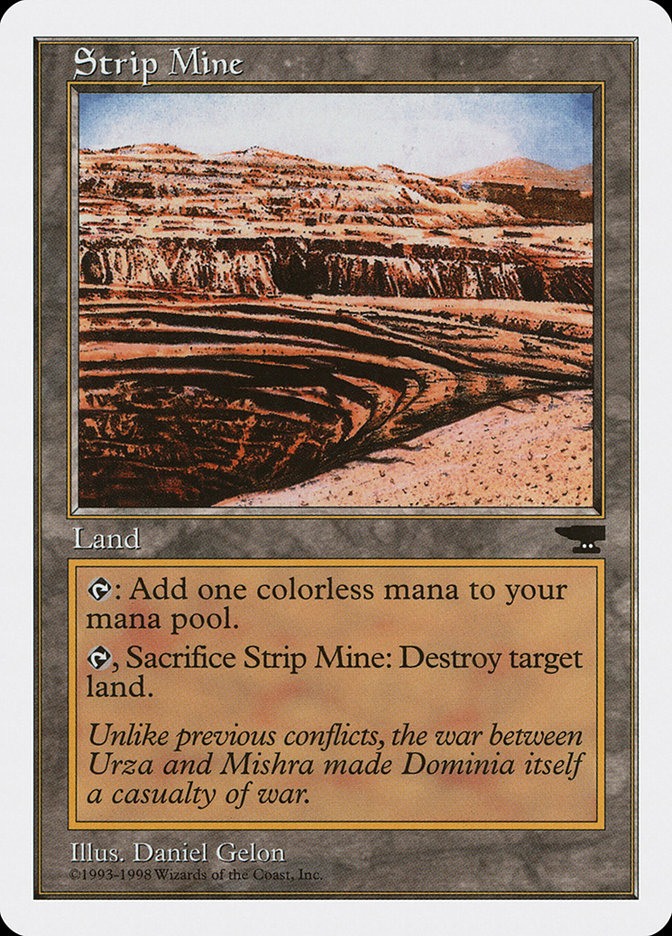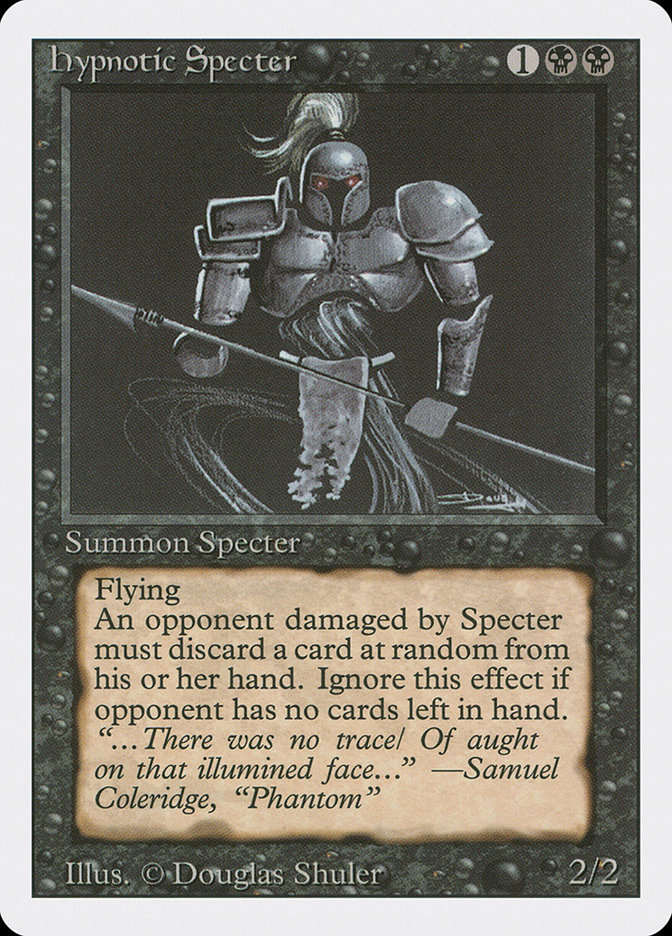In the aftermath of Pro Tour Khans of Tarkir, I spent a lot of time thinking about the deck I played. On the one hand, I absolutely
loved the deck. On the other hand, I could feel the ways in which the deck was flawed.
One of the most important things you can do when you have a deck is truly have a full 75 card list. This isn’t to say that you should have a 60 card deck
and a 15 card sideboard. While that might sound sufficient, it really isn’t. What you need is a coherent 60 card deck after you sideboard in every
major matchup.
This was one of the failings of the deck I played in Honolulu. In the leadup to the event, I was initially “running” a 20-card sideboard. That is, I had
about 20ish cards that I was considering for the deck’s sideboard, and I hadn’t fully determined which ones to work with. Sitting in the beach house with
my team for the event, I remember saying to Neil Reeves and Ari Lax that what I really needed to do was finally finish making Elephants for the deck to
wrap it up. (If you’re not sure what the Elephant Method is, in short, it is making “ideal” 60 card versions of a deck in all of the major matchups, and
then determining your 60+15 based on an amalgamation of all of those lists. Reid Duke briefly describes it this week in his Wizards of the Coast
article; it’s worth a read, though digging up Seth Burn’s two articles on it is also very worth your time.)
Ultimately though, I never finished doing that work. I was still wrapping up other kinds of work, perhaps to my own detriment. Several of the members of
the team were working on Jeskai (I’m going to agree with Sam Black and say that this is perhaps the best name for it, the next best being “Jeskai Burn,”
but certainly not “Jeskai Tempo” or “Jeskai Wins”) and I was giving input. There was a U/R Control deck that needed examination. There was looking at all
of the various versions of Abzan. And there was just playing my U/B Control deck, trying to figure out the little details like the last bits of mana.
For reference, here is what I played in Hawaii:
Planeswalkers (5)
Lands (22)
Spells (33)

What I failed to realize when I was wrapping up my final decision is that I’d bloated my sideboard to be too large against Abzan. This was, perhaps, a
casualty of the failure to make Elephants of the deck and not finalizing the sideboard sooner. I actually had seventeen cards in my deck’s board the morning of the event and basically chose the final fifteen in the last moments based on what little intelligence I could glean in talking to
people. The last cards cut, incidentally, were Aetherspouts #3 and Pearl Lake Ancient #1.
An example of the problem of this sideboard came in my first match against Abzan. The version I was playing against had Utter End, Nissa, Worldwaker, and Fleecemane Lion. I boarded in the following:
I boarded out:
….and then I realized I was now in the position where I was going to have to cut cards that I liked for the matchup to get down to 60, and I didn’t know which ones.
This is a massive failure in preparation. I’d tested so intently against Jeskai (numerous variants), more aggressive Abzan (‘Baby Abzan’), our
Abzan Midrange list (that Ari won the PT with), red aggro, black aggro, and other decks, what I hadn’t done is actually spend time prepping against a more
typical Abzan Midrange list that was boarded.
I ended up going 7-3 with my build of U/B Control, basically putting me in the same ballpark as the other top control decks (Floch and Cuneo going 7-2-1
and Turtenwald and Orange going 7-3). I’m sure though, if I had actually finished the proper work on the deck, I could have gotten another win.
Last week, I shared the anecdote about Cuneo knocking on
Ashiok, and I remember feeling like he was very, very wrong to dismiss the card. Still though, in that moment, realizing I had another
fundamental error in my deck, I was of the opinion that Cuneo’s build had surpassed my own. I didn’t have his list in full, but I knew that he’d managed to
fit in four copies of Dig Through Time, a card that I had tried to get to that point in my own list, but that I’d not succeeded at making work because it
was just too much of a liability against the most aggressive lists. I assumed that he had largely solved the Jeskai problem like I had.
In talking to people at the Pro Tour, however, it ended up sounding like they were actually really struggling with Jeskai. At this point, I didn’t have the
Cuneo list being played by The Pantheon, but I knew that they had won every encounter they’d had with my build of the deck and that they had most
of the same strengths as mine. By the end of the tournament, I felt pretty strongly that Cuneo had managed some things I hadn’t, and I was looking forward
to seeing his list, either to inspire my own, or just to adopt and start working on. I didn’t have it yet, but here is his list:
Creatures (2)
Lands (21)
Spells (37)
- 6 Island
- 3 Thoughtseize
- 3 Jace's Ingenuity
- 4 Hero's Downfall
- 4 Dissolve
- 4 Bile Blight
- 1 Aetherspouts
- 4 Perilous Vault
- 2 Murderous Cut
- 2 Disdainful Stroke
- 4 Dig Through Time
Sideboard

Conversely, I had gotten a full look at the list being played by Floch and company, and I didn’t like their build at all, because it wasn’t playing what I
think is one of the titans of Standard:
I was completely unsurprised when Floch decided not to play his list against for Grand Prix Los Angeles. Aside from not running Vault, I didn’t
like the huge quantity of discard he was running (six!), and I was pretty sure that his four (four!) Disdainful Stroke were massive overkill. Here
is his list:
Creatures (4)
Lands (23)
Spells (33)

Both of these decks were incredibly well-positioned against slower decks, to be certain. They were especially well-positioned against my
particular build of U/B Control. It’s funny though, because when all was said and done, I think the mistake I made in my build (other than the massively
fundamental mistake structurally I’ve already talked about) was that I overprepared for aggressive decks, and it seems to me that both other
groups woefully underprepared for them. Floch’s seems so utterly dominated by both Cuneo and my builds, I actually can’t see a reason to play it
over either of our builds.
Floch’s was an easy one to dismiss. The struggles it had against numerous versions of Jeskai were clear and fundamental. Importantly though, it actually
even struggled against numerous versions of Abzan! The builds that Cuneo and I had made actually were great against most (though not all) versions
of Abzan.
Playing Cuneo’s deck, I started to notice something: his build was beating the same groups of midrange my deck was. However, he was so much weaker
against anything going for the throat, it was very noticeable. Again and again, versus Jeskai, I’d almost win and then end up just barely dead. With the LA
lists in hand, let’s not even talk about the problem of the red builds, which came with overwhelming game 1 losses (where my build was only a slight dog)
and not enough returns after sideboarding to make it a favorable match (where I was managing a comfortable margin for the match).
Since the Pro Tour, I’ve come to a simple conclusion: my approach to the archetype is, at least in the current tumultuous meta, the best option.
There are, however, a lot of very important lessons that can be gained from both of the other decks:
Discard (and The Game of Life)
My build at the Pro Tour ran four copies of Despise.
Again and again in the beach house, people would ask me to consider using Thoughtseize instead. I would ask for the testimony of the many people who had
played against me the most with Jeskai, particularly Adam Mancuso. “Mancuso,” I’d say, “How is Thoughtseize in my deck?”
“Horrible,” he’d say. “It turns your game 1 wins into losses. I would have beaten you so many times if you’d cast a single Thoughtseize instead of
a Despise, let alone more than one.”
We had some version of that conversation a ton of times.
Floch’s build, to my mind, somewhat supports this conclusion. The two life matters. He runs four copies of Despise in the main. He does
include two copies of Thoughtseize, but he doesn’t even run the full four Thoughtseize after board. This is quite on purpose, I think. I’m sure he came to
find that the things he most wanted to have an opponent discard were creatures and planeswalkers, and there simply weren’t very many spells that he cared
about.
If you do nothing else to Cuneo’s build, you need to simply get rid of those Thoughtseizes. Board them if you must.
Cuneo, however, had reduced the discard to only three in the main and only a total of four in the deck. This is a very interesting decision, and
in studying how the deck played, I came to see the sense in it. It is fine to cast an early discard spell and it usually hits, but the game does
draw to a very late moment, and topdecking a discard spell feels really horrible and can occasionally be game-losing. As much as discard and Perilous Vault
interact favorably, Cuneo’s build convinced me that a fourth maindeck discard spell is overkill.
Cuneo also managed to find room for Radiant Fountain, albeit as a 27th land. I’m still not 100% certain of exactly how far to push the land, but I’m very
confident that two Radiant Fountain is definitely correct in 26 land, and that three probably is. The lifegain from the lands in the U/B deck is
incredibly meaningful. Right now I’m on three Radiant Fountain, and while I still need to make sure I have the mana mix perfect, I feel pretty great about
it.
Removal
Let’s start with the card that was most reviled by the people in the beach house:
Ultimately, I understood their complaint about the card. I, myself, was not overly excited about the card. But sometimes cards serve a purpose, and you
just have to accept that they do a job that matters. In the case of Aetherspouts, it is a double-purpose: it allows you to reset the board and in many
cases be ‘in position’ (untapped on their turn with no threats in play), and it puts your opponent to a horrible question when they know the card
exists in your deck. Ultimately, trying to play against the card is horrible, and if you do, many times you just fall into making Hero’s Downfall better.
I ran two in my maindeck. However, I think Cuneo is right with only one; it accomplishes both of the two major purposes, even if it doesn’t show up very
often. On the upside, as a total role-player, you really don’t want it to show up that often. I still want the second one in my board as a means
to fight against Nissa, Worldwaker, a card which can otherwise just get way too out of control.
Access to 2 Pharika’s Cure, 4 Bile Blight, 4 Hero’s Downfall, and 4 Drown in Sorrow was a consensus between all of us. Since the Pro Tour, however, I’ve
come to believe that the extra Aetherspouts often serves the same purpose as a Drown in Sorrow. In addition, while aggressive decks absolutely exist (Grand
Prix LA proved this), they are a small enough part of the metagame that I think that having the fourth Drown in Sorrow as a second Aetherspouts is
reasonable enough so that you can have a wider diversity of answers.
Cuneo managed to find room for Murderous Cuts. Personally though, in the post-Hawaii testing I’ve been doing, I’m just not sure how to make that work. It
has been consistently too difficult to cast while still supporting Dig Through Time, even modestly. The decks where I want the Murderous Cut against are
exactly the ones that tax the power of Dig Through Time. It just didn’t feel right.
Conversely, Floch’s decision to board Silence the Believers definitely reinforced my faith in the card in my own deck. Additionally, after losing the
second Aetherspouts in my build, I felt like I needed more potential multiple-target removal.
Things felt like they were starting to come together.
Ashiok, Nightmare Weaver
Here was the card that Cuneo first dismissed, to my shock. I respect Cuneo a great deal. Much like Patrick Sullivan, Cuneo is one of those few people I
know who I feel really get an archetype. For Patrick, that is obviously aggressive red decks, and for Cuneo, that is control. A lot of people view
Wafo-Tapa as the pinnacle of control, but I’ve never thought that Wafo-Tapa was anywhere nearly as good as many other control builders–especially
Cuneo.
Now, I often disagree with him on the details, and I feel like I’m usually coming from a place that is fairly similar to where he is on control. Some of
the minor details we’ve disagreed about (and I’m sure we’d continue to disagree about if we revisited decks from five or ten years ago), but the
fundamentals are typically in sync.
So, his negative opinion on Ashiok was pretty shaking.
To be clear, I’ve hated Ashiok for most of the time it has been legal since it was printed. In the previous Standard, my friend Adam Jansen was playing a ton of Ashiok in his control decks, and to be frank, I never really thought it was where you wanted to be. What it boiled down to was that the
card was too easily answered by too many things, and that it didn’t give much of an upside. Generally, it was a card that you’d have to work too hard to
make good.
I actually think that that is very much no longer true.
Against the old U/W Control decks, your Ashiok might get overpowered by the fight over Sphinx’s Revelation (after all, you were down one card for the
showdown), and then easily answered by a “whatever.” Against green decks of all sorts, Polukranos, World Eater was the default, and it could kill Ashiok in
a single swing. Even without that happening though, Domri Rade’s very existence often gave the green decks the fuel to be powering out pressure on the
Ashiok. Mono-Black Devotion and Mono-Blue Devotion could typically overpower it. And then, there was this card:
Frankly, I think Ashiok, Nightmare Weaver was a really underwhelming Magic card for a long time.
So, you should take note when I’m now advocating a deck that plays four of the card.
You want Ashiok in nearly all of your matchups. It is at its worst against Mono-Black Aggro (a deck that is practically nonexistent), where you’d likely
side out all of them. There are reasons to board out a small number of Ashiok against decks that are both very creature light and that you’re expecting a
long drag-out (but only where you have an abundance of other weapons you need to find room for).
Against most decks, even those with Hero’s Downfall and other answers, you want to be dropping Ashiok, even if it is turning on some of their
cards.
The difference between the past and now is that you can actually look to Ashiok to be a defensive card that is reliably able to provide you with creatures,
courtesy of your opponent. Except for in rare matches, Ashiok isn’t a finisher (which is perhaps why Cuneo is opposed to the card philosophically); what it
is is a steady card advantage engine that can help preserve your life total.
Right now at least, the card is good.
Draw (and More on Land)
Both Cuneo and Floch ran 27 land. I decided that I needed to find room for the extra land.
In playing their lists, I sometimes felt like I was flooding a little, but I was getting some nice mileage out of Dig Through Time, which felt
like it was making this not such a huge deal. However, I still felt a little land-heavy, especially in the Cuneo list.
Now, in a deck like this, you want to be making a land drop constantly. It’s just what you need to be doing for your deck to function in the
early- and midgame. To make this happen though, I was suddenly in the position of feeling like I’d need to cut some card or another that felt like a huge
deal.
Talking online to my long-time collaborator Ronny Serio made me feel like I just needed to keep with the 26 land. He’d stayed at 26, and he was doing well
with it.
I wasn’t certain of the exact specific mix of land (and I’m still not, to be clear). For me, a lot of my land work is based on modeling from other
successful lists and then brute forcing changes. Cuneo’s single Evolving Wilds was making a lot of sense to me, and I had been trying it out before the Pro
Tour, but I hadn’t finished figuring out the mana yet, though I knew I was close. After the Pro Tour, I adopted the single Evolving Wilds as a kind of
“ninth U/B tapland” of sorts, in part modeling on Cuneo, and in part re-reversing a decision that I hadn’t completed in the Pro Tour prep.
Throughout all of this, I’d gotten to the point where I was firmly certain that the approach I had to the deck – Ashiok, Vault, multiple Fountain, no
Thoughtseize, and a healthy respect for aggressive decks – was the right one. This was a reversal of how I felt directly after the Pro Tour, but the more I
tried out the other decks against successful aggressive decks, the more lacking those other U/B Control decks felt to me. I had shifted slightly in their
direction, but I was still at heart the same deck as I had been, just more honed.
I stopped testing their decks and focused on my own. I tried 4 Dig Through Time, and just found it was too much for the deck to support against the
aggressive decks. I was still running 27 land, but I’d find myself with the card in my hand before I was ready to use it.
It was a phenomena that kept repeating itself. I cut a Dig and basically felt worlds better.
I still was running “the Liliana Vess” package. Lili, by herself, could either grind out that last card in someone’s hand or just start tutoring to close
the door in some matches. Typical targets might be Dissolve, Drown in Sorrow, Aetherspout, Hero’s Downfall, Radiant Fountain, or “the combo.”
This is the Liliana Vess/Interpret the Signs quasi-combo. Liliana Vess minus two to search for an Interpret the Signs followed on the next turn by a search
for Dig Through Time to draw eight cards. I loved this combo so much because you could completely lock out games with it, but you didn’t need to be going
for that to get value. Even just being cast “cold,” Interpret the Signs was a great card to cast once you’d cast all of the other cards in your hand that
mattered.
While I was very onboard with those cards, I was definitely feeling the pinch of all of the top end. I was, at that point, running 3 Dig Through Time, 1
Liliana Vess, 1 Interpret the Signs, and 2 Jace’s Ingenuity. Once Ronny had me convinced on 26, I did find that I was struggling a little with glut at
times.
Something that came to mind was the initial reason I’d switched to Jace’s Ingenuity from Divination (a change that Cuneo also made, according to Owen
Turtenwald). I had wanted to have more powerful card draw for the larger Abzan decks and for more controlling builds of Jeskai that were both burn-heavy
and counter-heavy after board. The direct switch of Jace’s Ingenuity from Divination helped in those matchups, but it definitely also had a cost against
the aggressive decks and in hitting drops.
Ronny had been feeling pretty good about the extra card drawing power of Jace’s Ingenuity and 26 land, but I felt like I was stumbling just enough
to be unhappy about it. I really wanted 26.5 land, and it didn’t seem like there was a great way to get there. At one point, I had a realization: I
preferred the power of Jace’s Ingenuity, but I also needed to ease up on the strain I was putting on my land.
Maybe if I needed half a land more and I had a little too much at the top end, the solution would be to gently nudge the curve slightly down and run a card
that could help me find more land early. Thus, I ended up with a final count that looks a bit odd: 1 Divination, 1 Jace’s Ingenuity, 1 Liliana Vess, 3 Dig
Through Time, 1 Interpret the Signs, 26 land. I have to say, I’m very happy with it actually, even though I’m still trying to figure out the exact
land I want.
I’m close though. My question mark is on only one land now: what should my Temple of Mystery be? Currently, the candidates are Temple of Mystery, Evolving
Wilds, Temple of Malady, Island, and Swamp, in roughly that order. To figure this out will just take more playing against basically everything. But I’m up
to that.
Digging the Board
I started with a board that was definitely too large. Now, I feel pretty good about where I’m at with board cards, though I’m trying to figure out the
details.
Here are the cards I’m looking at (with the preferred number underlined):
2-4 Negate (vs. Dig Through Time and Jeskai Ascendancy)
2
-3 Prognostic Sphinx (vs. Dig Through Time and weenie aggro)
2
-3 Pharika’s Cure (vs. aggro, if they have enough targets)
2
-3 Thoughtseize (vs. decks that don’t threaten your life total)
1
-2 Disdainful Stroke (vs. Abzan and Treasure Hunt/Dig Through Time)
1
-2 Drown in Sorrow (vs. weenies and ramp)
1
-2 Cranial Archive (vs. Hero’s Downfall, Thoughtseize, and graveyard decks)
0-1 Aetherspouts (vs. Nissa, WorldWaker and non-Thoughtseize weenie)
0-1 Stain the Mind (vs. combo, Jeskai, and control)
0
-2 Pearl Lake Ancient (vs. control and Jeskai)
0
-1 Jace’s Ingenuity (vs. slow matchups)
0
-1 Silence the Believers (vs. Abzan or other midrange, and any deck you just need more removal against)
0
-1 Liliana Vess (vs. control and combo)
There are a lot of “vs. Dig Through Time” entries above. This is just because it’s a good shortcut. Whether it is U/B Control or Jeskai, for example, after
board, they both can have a lot of the same traits since they are going to be fighting for card advantage and running counters, and it actually is a good
way to think about what decks are doing after board. It’s very easy to just get pushed over in a Dig Through Time fight unless you realize that
much of what you’re fighting over is pure resource power.
To give you an idea, let’s go back to the past for a moment. In 1997, this was a powerful card in Magic:
Eric Lauer’s Big Blue was an important deck in that moment. If you don’t know what it is, check it out:
Creatures (12)
Lands (8)
Spells (40)

Now, for reference, this set of cards was legal at the time:
Strip Mine was restricted, and it was after Black Summer, but still, fricking Necropotence was legal, and Ancestral Memories was winning many tournaments!
Ancestral Memories was just an incredibly powerful card. The selection was that important. Dig Through Time is just Ancestral Memories on steroids, and if
you’ve played against another Dig Through Time deck with countermagic, you know what can happen: you can start being buried by Dig. In Dig
semi-mirrors, someone can just run away with the game if they have enough countermagic, because they’ll find the counter to stop your next card advantage
engine, and then maybe have found another Dig (or other card advantage card) to seal it up.
Keeping this in mind as a dynamic in boarded games is really important.
Much the rest of the board is pretty self-explanatory, with the exception of Prognostic Sphinx as a great card against aggressive decks or Jeskai. This is
because the Sphinx can hold the board in a hard-to-handle way. You aren’t excited about the Sphinx as a finisher, you’re looking at it as a control
element. In the U/B semi-mirror, if you happen to get a Sphinx down that is great, but really, you’re often thinking about it as a five-mana Duress.
As always, remember it is best to sideboard against how someone is playing their deck rather than try to have a pure sideboard guide to use as a generic
catch-all against all people playing a deck. If you look at my list above, I’ve got about 26 cards that are currently in circulation for the board, but one
thing to remember is to not make the mistake I made at Honolulu and just have way too many cards for some matchups, and not enough for others.
Putting It All Together
Here is my current version of U/B Control:
Planeswalkers (5)
Lands (22)
Spells (33)

I was doing a great job winning with a slightly earlier version of this list, but once I put this version together, it really amped up. I won eleven
matches in a row on Magic Online, with my streak broken by Brad Nelson’s Mardu deck (although I did double mulligan into a bad mana hand and still almost
win game 3).
The deck just feels really good.
I’ve already gone into a lot of detail about the process that got this deck to where it is. The maindeck feels really good with some small questions on
mana (I’m “only” about 80% certain on the third Radiant Fountain, and I’m still working on what Temple of Mystery should be, though “Temple of Mystery” is
my front-running answer). The sideboard could be altered slightly for any particular metagame, and I think could maybe be sharpened up a bit more, perhaps.
I’m still trying to decide if 4 Negate is overkill, if I want that fourth Drown in Sorrow back in, and if Stain the Mind is worth it.
If you like counterspells in your control deck, I think this is the deck for you. I’ll be at Gnome
Games in Green Bay playing in a sealed deck PTQ (follow my Facebook page if you
want to keep track of my progress), but if I was playing at the Open Series in Minneapolis this weekend, or any other Standard event, I’d absolutely be playing this deck.
This is a classic control deck. Draw cards, kill monsters, counter spells. Furthermore, if that’s your bag, I think this is the best deck at the job. Soon
enough, people will train their guns on U/B Control.
Until then, show them why they need to.

